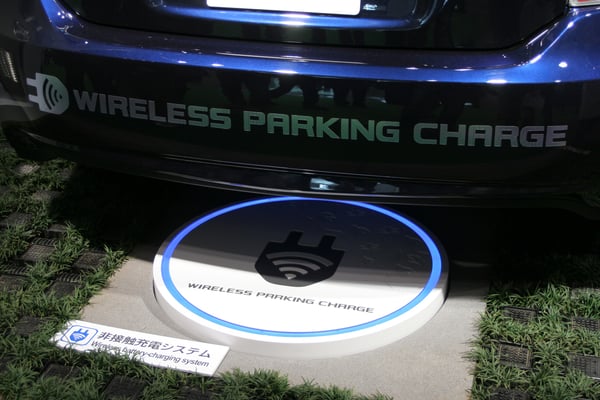How Induction Technology Brings Hope For Future Efficiency
People are becoming more and more interested in the future of electric cars and transport. With this popularity comes the need to create a system which is much more efficient and suited to the life styles of the people who use it. Currently, to charge an electric car the user has to physically plug the car into an electricity source and wait hours for a full charge. This problem or rather inconvenience is quickly becoming the centre of attention for many people with new innovations being developed to remedy this problem. Wireless charging systems are therefore becoming increasingly researched with induction charging systems or charging plates becoming more and more viable.
This system works without the need for the user to physically plug in their car when they want to charge it, instead a charging plate either resting on top of the ground or embedded in the ground will charge the car by using an electromagnetic induction system transferring electricity from the power source on the ground to a receiver on the car. Therefore, by using this induction plate, the user does not need to remember to charge their car, simply park in their regular spot with the charging plate and let it charge automatically. In Rotterdam an app has already been discussed which would allow people to track their charging points through the day as well as track spending and charge percentages making it a much more convenient process.

The technology although still in its infancy is a very promising piece of technology for our future, as currently the requirement of electric charges to be manually charged for long periods of time is a deterrent to many buyers. This technology is also holding a lot of promise for regular transportation such as buses and taxis, as their daily path is highly regular and therefore they can be charged periodically throughout the day. This also is attempting to solve another future problem of driverless cars, as currently without an automatic induction charging pad, there would have to be a system for charging cars manually, defeating the purpose of an autonomous car.
This technology has been used in the past on much smaller devices such as electronic toothbrushes and more recently in mobile phones, however the effectiveness of this technology is based on the requirements of what it is charging, as when it is being charged it cannot be moved from it charging pad and it is a much slower way to charge a device, effective for a toothbrush but not for a mobile phone. Therefore, currently in devices such as smartphones it is not entirely effective. That is not to say that the future of induction charging isn’t bright, many believe that it is the future and that with continued research and development the technology will be a highly advantageous and widespread method of charging a range of devices or various sizes.
In the car industry many companies have invested a lot of time and money into its further development, seeing its potential in the future. This technology is set to have a major impact on the industry, as without the hassle of plugging a car in to charge many more people will be much more likely to buy an electric car. Companies such as Mercedes, Tesla and Volvo are already experimenting with the idea.
This technology also has greater implications outside of the car industry, when thinking about the possibilities this technology has when designing a building in the future. Wall sockets and wires currently pose both a safety and aesthetic problem when designing, therefore by eliminating the need to have them greatly increases the possibilities to create seamless designs whilst reducing the risk of electrocution especially with infants.
Induction charging in vehicles such as trucks could also greatly reduce the impact that construction and importation have on the environment, therefore reducing the total energy and emissions of a project, reducing fossil fuel use and transportation cost.
Although this technology is still in development, and a long way from becoming viable for widespread use, the promise it holds for the future of both the car and electronic’s industry is immense. With further development the ability to wireless charge devices and cars will increase greatly, with one possibility of a road with the induction charging pads embedded in it that charges your car as you drive.









